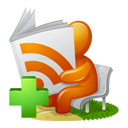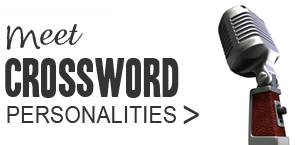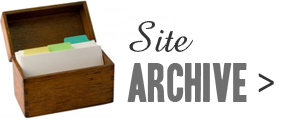
["Why will I want to do such a thing", you ask? Dozens of reasons. You find the clue-sheet unusually large and suspect it's because there are more words in the grid than average. You've solved the puzzle and want to find out what percentage is made up of anagrams. You want to do it because like any self-respecting crossword solver you obsess over pointless trivia.]
Tell me how. I'll update this post after a day (by Thursday evening), with links to ways you mention in the comments, and also write how I do it.
No earth-shattering revelations so don't hold your breath, but a property of the crossword grid comes nicely into play there.
Leave a comment, and do drop in this Thursday evening IST to see the updates.
Update (22nd Oct 2009 Thu): Thanks for your comments! Tony (The MEANDERthal man) has written an equation for counting that would impress any mathematician. Baldev does it by simply counting the clues.
Colonel Gopinath, I'm pleased to find, has the same method as mine. Without further preamble, here it is.
A Quick Way To Count The Answers
- Run your eye down the DOWN set of clues, counting only those having a number common with the ACROSS set.
- Add this to the biggest clue number on the ACROSS set of clues. That's it - the number of total answers in the grid.
Applying this on today’s The Hindu 9668 (M.Manna):
Down clues sharing a number with an Across = 3 (1D, 5D, 22D)
So the grid has a total of 3 + 29 (Biggest Across clue number) = 32 answer slots.
Simpler and faster than counting the clues sequentially, isn't it?
Of course, if you have the clues in text/HTML format online, the fastest way is to paste the clues in a text editor and enable "show line numbers". (There are some things machines will easily beat humans at. At least at solving cryptic crosswords, humans still have an edge over computers.)
Related Posts:
If you wish to keep track of further articles on Crossword Unclued, you can subscribe to it in a reader via RSS Feed. You can also subscribe by email and have articles delivered to your inbox.









 Follow on Twitter
Follow on Twitter Join us on Facebook
Join us on Facebook Get RSS
Get RSS

10 comments
[{Number of words (answers) in the first 7 rows}*2 + Number of words in the 8th row] + [{Number of words (answers) in the first 7 columns}*2 + Number of words in the 8th column]
This is also an example of how to make a simple process appear complicated.
PS May not be applicable to Non Judicious grids.
If I had to count, I would count the number of clues.
The number of across clues plus the number of down clues which have a common starting square with an across clue
Of course, if you have the clues in text/HTML format online, the fastest way is to paste the clues in a text editor and enable "show line numbers".
But if the lines are printed in narrow columns in the paper, some lines in the text that we copy and paste may spill over and so they must be put in single lines; and the headers ACROSS and DOWN need to be removed before we bring on "Line count".
deautdruYou write in parantheses: There are some things machines will easily beat humans at. At least at solving cryptic crosswords, humans still have an edge over computers.
Quite true! There is a famous software that is said to solve clues using what they call artificial intelligence.
It solves some clues correctly but mostly they are anagrams and other less complicated clue types.
What we must remember is that these devices are as good as the database that is attached to it.
I am sure that clues with answers from Indian English or clues crafted less perfectly such as some that we have seen recently will just flummox the software, which would throw up its hands if only it had them.
But if the lines are printed in narrow columns in the paper, some lines in the text that we copy and paste may spill over and so they must be put in single lines; and the headers ACROSS and DOWN need to be removed before we bring on "Line count".
Yes - but the good thing is, regular expressions can take care of those in a click.
I've a couple of scripts handy for such cases, which I use on Textpad. Sharing here in case anyone else wishes to use them:
To join clues split over multiple lines: replace \(^.*[^)]\)\n with \1
To remove all blank lines + the words Across and Down: replace ^Across$\|^Down$\|^$\n with nothing
That takes care of the editing needed before "show line numbers".
To add to that, any text editor that supports regular expressions (like Notepad++) will use the same or similar format for pattern match.
There is a famous software that is said to solve clues using what they call artificial intelligence.
I'd done a trial run of this software once on THC 9359, and made notes.
It was pretty good with anagrams and decent enough with direct double-defns too. It didn't work too well with other clue types, and got many of the straight/cryptic defns wrong.
I must mention that it had a very entertaining style of explaining why it suggested a particular answer, with its confidence in %age. Sample:
5 Small compartment for driver of taxi (7)
CABOOSE Confidence: 6%
'small compartment' is the definition. I am not sure about the 'small' bit but 'caboose' can be an answer for 'compartment'. 'driver of taxi' is the subsidiary indication. I cannot quite see how this works, but 'taxi' could be 'cab' and 'cab' is present in the answer. The remaining letters 'oose' is a valid word which might be clued in a way I don't understand. This may be the basis of clue (or it may be nonsense).
Nice! never thought of it that way... I have always used MEANDErthan man's formula ;)
Excellent. Thank you.
Post a Comment